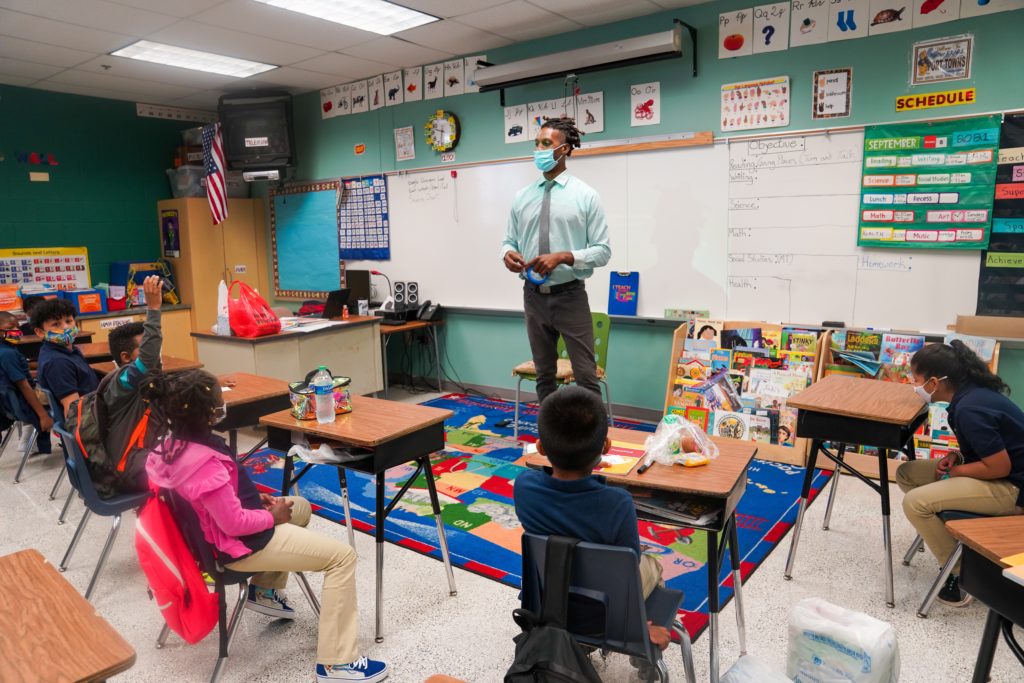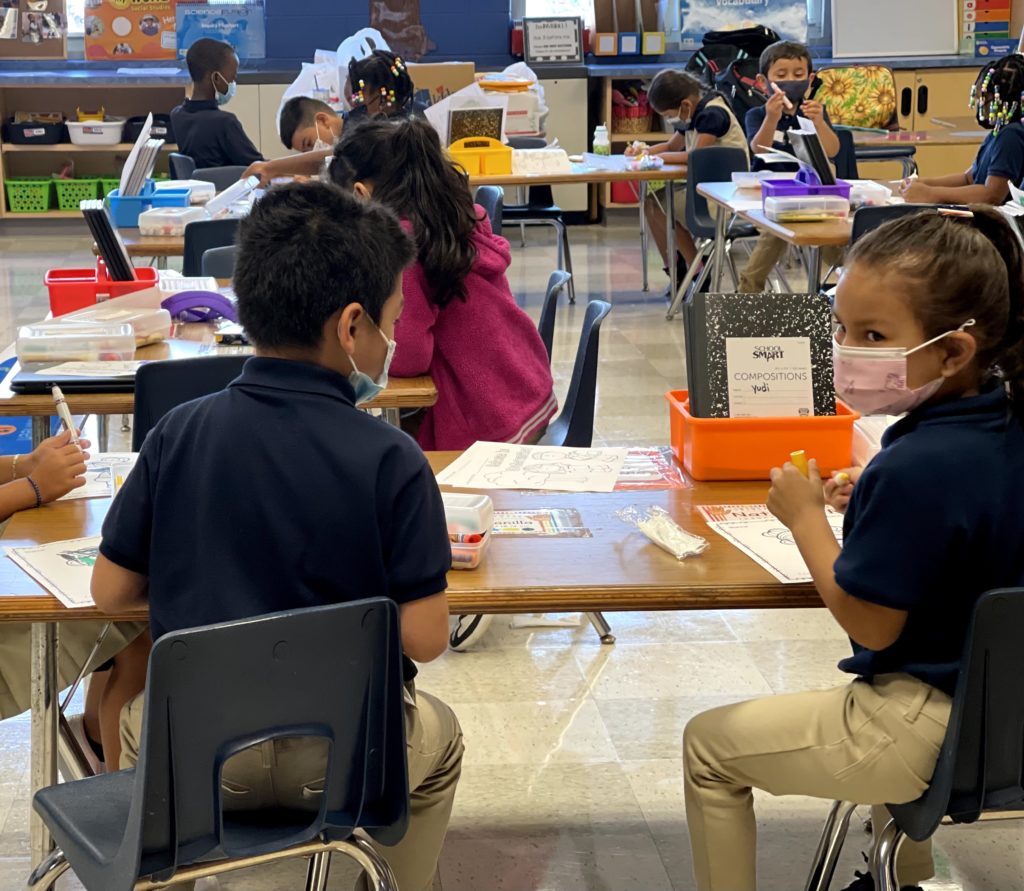As K-12 school districts around the country spent this past summer working tirelessly to get their facilities ready for the new year and welcoming students back after a tumultuous 2020-21, a series of groundbreakings took place in a suburban Maryland county outside of Washington, DC that could be viewed as “groundbreaking.”
Prince George’s County Public Schools (PGCPS), among the country’s 20 largest K-12 school districts and serving more than 136,000 students (and growing), took decisive action when faced with a sizeable seat deficit and 200+ aging buildings. In order to accelerate the delivery of five planned middle schools and one K-8 school, district and county leaders entered into a public-private partnership (P3) in December 2020 and broke ground in late June this past summer. All six schools are scheduled to open for the 2023-24 school year, a relative “blink of an eye” as far as how school design and construction timelines typically go.

The private development team that will operate under a design-build-finance-maintain (DBFM) alternative financing model is led by Fengate Asset Management and Gilbane Development Company. This team has committed that in addition to adding 8,000 new seats and cutting the building delivery time in half, it will save the district $174M in deferred maintenance and construction costs over the course of the multi-year agreement.*
But as PGCPS becomes the first public school system in the nation to leverage a full-scope alternative financing model to design, build, finance and maintain some of its facilities – and PGCPS is planning to use this same model for another set of planned schools – many other districts are watching closely to see how this plays out.
And they are also asking whether this might be right for them!
So, what makes the P3 delivery model the potential right fit for a K-12 district looking to build new schools or modernize its existing inventory?

First, it’s important to define what a P3 actually is (which isn’t exactly easy)! But it’s best to think of it as a development/deal structure in which a public institution takes on a private sector partner (or partners) to share in the resources, risks, and incentives that come with the development and operations/maintenance of facilities.
As deal structures go, P3s are very complex. Because each one is different, and because there are so many moving parts and parties, P3s are almost unwieldy. Meanwhile the stakes are high because P3s are true partnerships—public institutions are not picking a one-time collaborator for a quick job. Rather they are selecting a partner they will work with for, potentially, the next several decades, and a partner that future district employees will need to successfully work with to improve users’ experience for years to come.
Thus, P3s are by no means a silver bullet. They are not straightforward, short-term engagements, nor are they without their challenges. They are simply one type of alternative delivery method to finance projects that might otherwise go unfinanced, to speed up the delivery time of a new facility, to leverage assets like land, transfer risk, and ensure operational success for years to come.
P3s have gained quite a foothold in the US, from infrastructure to government buildings, as well as within higher education. Whether K–12 is the next big area is yet to be determined, but it’s possible. Public K–12 districts as well as charter schools might look to P3s for many reasons, including funding challenges and how long it typically takes to get to ribbon cutting. Beyond being a financing vehicle, P3s can also be structured to leverage expertise, avoid potential procurement challenges, and improve operational efficiencies, and more. So if a district is at Point A and wants to get to Point B, P3s are one way to bridge the distance.

While the market is still learning how to best structure and implement P3s in the K-12 sector, there are some lessons learned that we can take from other sectors on what can make a P3 successful:
- A clear definition of expected outcomes from the parties involved.
- Sufficient development time for a district to negotiate the structure and required legal agreements of the project.
- A true partnership where both parties have mutual respect and consideration for each other, and are invested in each other’s success.
- Honesty, as nothing can cause a P3 to implode faster than a lack of trust among the parties.
- A fair and equitable contract/management agreement where expectations are clearly spelled out, allowing both parties to know exactly what is expected and how success will be measured.
- A close working relationship, because the private sector partner must have support from and access to district leaders.
- Realistic and clearly defined milestones that allow for the multi-layered review and approval process that many districts and school systems have.
- An intentionally designed project, defined by the school district.
- Flexibility, as the district should carefully define its needs and in responding to those needs, the private sector partner should have latitude to shop for the most cost-effective solutions available.
- Using an experienced P3 advisor at every step in the process.
If a school district wishes to engage in a P3, that can only happen if local laws allow for it. Because social infrastructure P3s (like school buildings) are newer in the U.S., this legislation does not always exist. In the case of Prince George’s County, for example, such laws were not in place – so a state law had to be created and enacted for the project to move forward.

P3s aren’t employed for fun. They’re complex. They cost money and there is some risk. And they involve ample community engagement—often from a resistant community. Some people praise P3s and others demonize them – and both sides can feel justified depending on how P3s are viewed as a concept and which case studies are considered.
But what’s important to remember is that P3s are not black and white. They are potentially a world of opportunity, resources, creativity, and collaboration – and at the same time, potentially a world of misrepresentation, control issues, and difficult relationships. Which world a district potentially ends up in is up to its leadership and the specific projects being considered. This is not about chance or luck, because our history advising on P3s in this and other sectors lets us confidently say that P3s can be planned and designed to ensure success. It just takes a lot of education, thoughtful planning, and vision.
*Brailsford & Dunlavey is currently supporting PGCPS with Phase I of the alternative construction financing program, providing technical program advisory and project management for procurement, design, construction, swing space logistics and community engagement.

